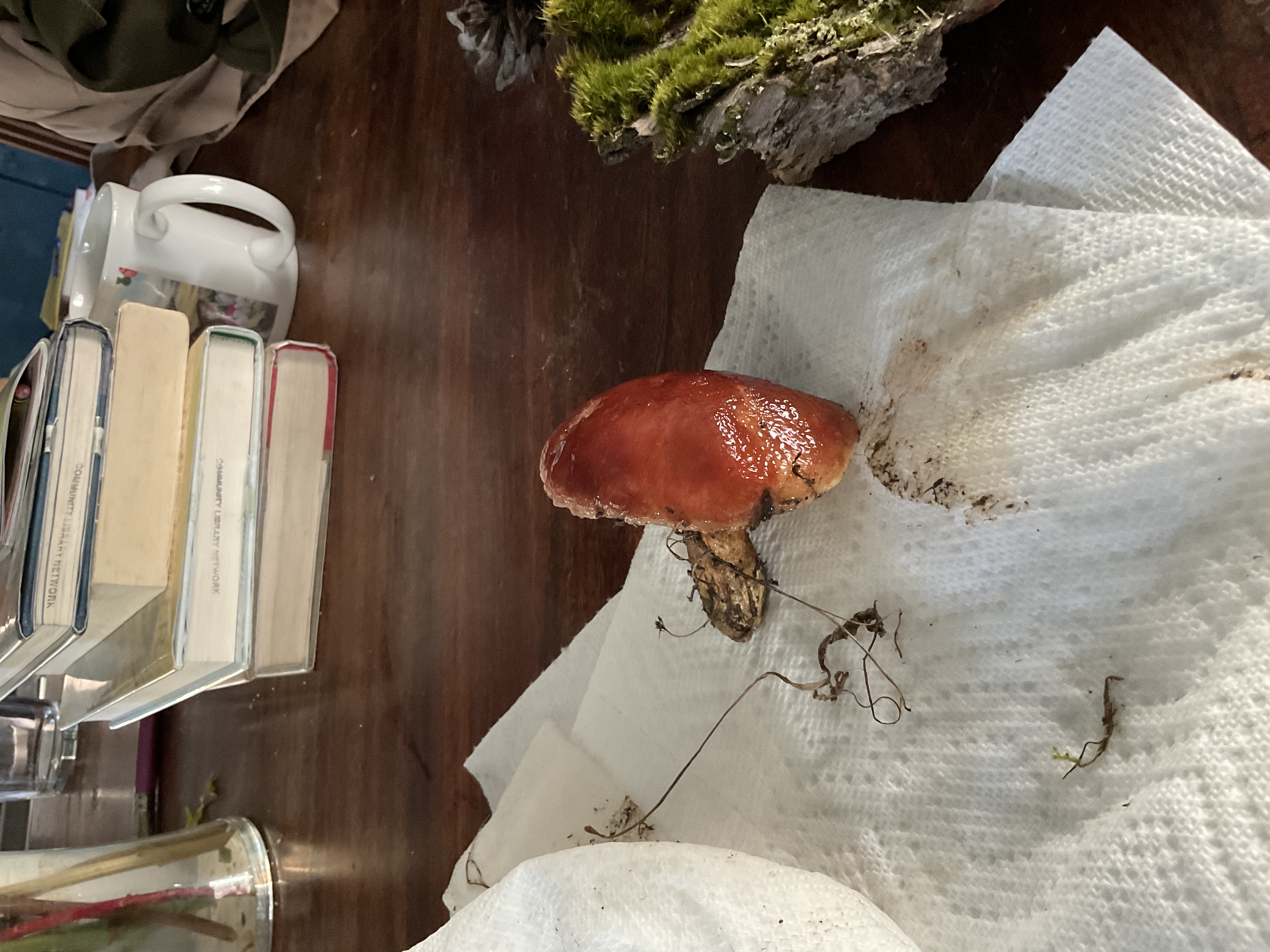Slippery Jack (Group)
Suillus salmonicolor
Bolete Identification: Highly Viscid Cap, Potential Lookalikes

1 / 4
All Images (4)
Key Features
- Cap highly viscid (slimy) and glossy
- Cap color reddish-orange to deep red
- Hymenium consists of yellow tubes/pores
- Stem robust
- brownish
- possibly glandular dotted (obscured by dirt)
- Flesh appears yellowish
- staining reaction unknown
Color:
Reddish-orange cap, yellow pores, brownish stem
Smell:
Unknown
Growth Pattern:
Single specimen observed
Environment:
Soil/Leaf litter
Habitat & Distribution
Habitat:
Likely coniferous or mixed forest (mycorrhizal)
Distribution:
Widespread in Northern Hemisphere, associated with conifers
Seasonality:
Summer to Fall
Critical Features for Confirmation
- Critical context staining reaction (blueing) is not visible
- Spore print color is unknown
- Stem base features (volva/reticulation) obscured by dirt
Economic Value
Market Demand:
Low - generally considered poor quality due to sliminess
Price Range:
N/A
Commercial Use:
None
Similar Species
Satan's Bolete
Rubroboletus satanas
Key Differences:
- Pores are deep red or orange-red
- Context stains blue rapidly and intensely
Sensitive Bolete
Boletus sensibilis
Key Differences:
- Cap usually dry, not viscid
- Context stains blue immediately and intensely upon cutting
Slippery Jack
Suillus luteus
Key Differences:
- Cap usually darker brown or chestnut
- Prominent membranous ring on the stem
Recommended Action
Do not consume. Isolate specimen and wash hands thoroughly.